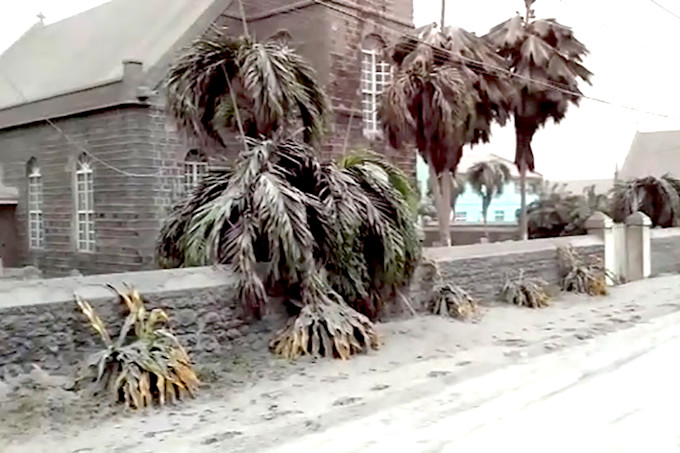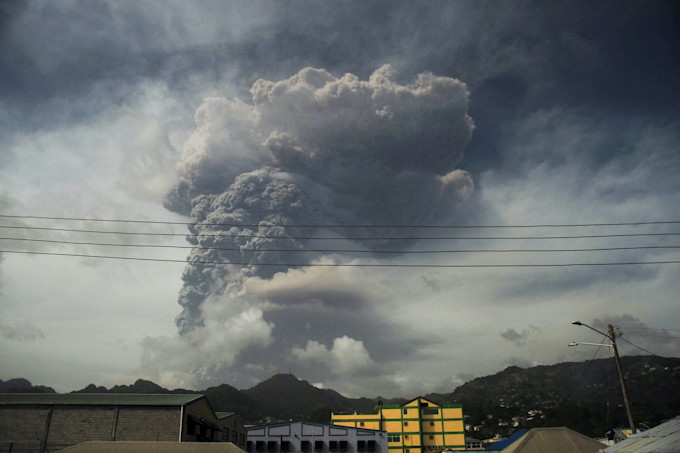Lightning in the Arctic used to be so vanishingly rare that people could go their whole lives without seeing a flash. But as the region warms rapidly, it may become more common—with effects that could reach outside the Arctic.

One recent study projects that the occurrence of lightning in the Arctic could double by the end of the century. Another study suggests that the number of Arctic flashes may have tripled within the last decade alone—though some researchers question that result.
Increased lightning is a worrying sign of today’s rapidly accelerating climate change, scientists say, but they’re also concerned for the future: More lightning could set off a cascade of ecological shifts that could release huge Arctic reserves of carbon into the atmosphere, accelerating warming further.
“The previous numbers [of lightning flashes] have been small, but it could have a really big climate impact,” says Yang Chen, a researcher at the University of California, Irvine, and the lead author of one of the new studies, published in Nature Climate Change.
Lightning-lit fires are increasing
In 2002, when researchers interviewed Indigenous elders from an Arctic community in northwest Canada, none could remember seeing more than a few lightning storms in their lifetimes. One elder recalled having seen a single storm in the 1930s, when she was only five years old.
Scientists weren’t really thinking about Arctic lightning back then either: It was so rare that even researchers who had spent decades of summers in the region might have never seen a flash.
“When I first came to Fairbanks, I’d see a thunderstorm and I’d be surprised,” says Uma Bhatt, a meteorologist at the University of Alaska, Fairbanks who has studied lightning’s rise in the Arctic and has lived in the state for 22 years.
In 2014 and 2015, some of the largest fires ever recorded burned across vast swaths of Alaska and Canada’s Northwest Territories. Like over 90 percent of all fires in the Arctic, these were sparked by lightning strikes.
As the Arctic warms and dries, plants there are becoming more flammable. But after 2014 and 2015, Sander Veravebeke, a climate scientist at Amsterdam’s Vrije Universitat and a co-author of one of the recent papers, wondered if there was another piece of the story: Were the lightning flashes that start fires also becoming more common?
“I checked the lightning data for those years and saw, ok, this isn’t a coincidence,” says Veravebeke, “An increase in lightning almost immediately leads to increase in fire.”
In a 2017 paper, he and colleagues found that the number of lightning-started fires in Alaska and the Northwest Territories had more than doubled since 1975, culminating in record-breaking numbers of ignitions in both places during the devastating 2014 and 2015 seasons.
Is there more lightning?
But was lightning actually flashing more often across the whole Arctic? That turns out to be a tricky question to answer, because no consistent, continually measured Arctic-wide records of the phenomenon exist.
A satellite launched in 1995 recorded polar lightning flashes, but it retired in 2000. Newer lightning-sensing satellites see only as far north and south as the mid-latitudes, not all the way to the poles.
Ground-based networks, which use sensors that detect the radio waves produced by lightning bolts, now record flashes that happen nearly everywhere in the world. Bhatt, using a regional network in Alaska, found a 17 percent increase in lightning activity between 1986 and 2015.
But Arctic-wide records are short, extending back less than 20 years, and are still not conclusive enough to document a solid trend, climate scientists say.
Recently, a team at the University of Washington dug into data from the World Wide Lightning Location Network, a land-based network of sensors that has been operational since 2004. They found that the number of flashes recorded north of 65 degrees increased from under 50,000 in 2010 to roughly 250,000 in 2020. Some of that might be attributable to an increase in the number of sensors, the researchers say, but estimate that lightning in the region has grown by a factor of three over the last decade.
Another global lightning-detection network run by the company Vaisala, however, does not capture this dramatic increase. The Global Lightning Database 360 became operational in 2012, so their record is shorter than the Washington team’s, but the network is more sensitive, recording more and fainter flashes than the others.
But from 2012 to 2020, they didn’t record any clear increase in lightning activity, says Ryan Said, a research engineer at Vaisala. That doesn’t necessarily mean there isn’t a trend, he says—just that it will take more years of observation to really figure out how the patterns are changing.
“This is really just the beginning of that journey,” he says.
The Vaisala lightning network has detected some unusual activity in recent years. In the summers of 2019 and 2020 the GLD360 recorded well over 100 flashes north of 85 degrees—including a spate of ultra-rare lightning within 300 nautical miles of the North Pole.
More lightning is probably coming
Whether or not the shifts are already happening, climate change means that more lightning is almost certainly coming to the Arctic, says Chen.
Lightning formation requires some very specific ingredients that have been rare in the far North, but that climate change may be making more common.
First, air at the surface has to be warm and loaded with moisture, ready to buoy rapidly. The air above it must be cold enough that when the warm air shoots upward, its moisture freezes into tiny ice particles. The whole system has to be so turbulent that the air swirls and roils, flinging around the ice particles with such vigor that they knock electrons from each other and become electrically charged. And then, finally, the giant discharge will occur, either within the cloud itself or between the cloud and the ground.
The Arctic’s cold, relatively stable atmosphere has not historically proved hospitable for thunderstorms. But air temperatures in the region have risen one to two degrees Celsius in the past three decades alone, faster than anywhere else on the planet.
Chen and his colleagues, including Veravebeke, wanted to estimate how much more lightning those changed climate conditions could induce by the end of the century. They compared the lightning data from the satellite that had recorded Arctic flashes in the 1990s with weather data from the same time period to figure out what atmospheric conditions matched up best with the rare occurrences of lightning in the region.
Climate models projected those specific lightning-conducive conditions, and by extension lightning—which is slightly different from the overall likelihood of thunderstorms—were likely to happen about one and a half times as often over the tundra in the future and nearly double over the northern forests. That’s a much bigger relative change than the 50 percent increase projected for the continental U.S. Globally, some research suggests there could be actually be a decrease in total lightning activity by 2100, in part because the lightning-rich tropics may warm so much that ice crystals form less often.
It’s not possible to match up the satellite data Chen and his colleagues used to estimate lightning with the ground-based networks used to detect the recent rise in activity, so the two results can’t be directly compared or integrated. But they both underscore that “Arctic lightning is becoming more important,” says Veravebeke.
The lightning feedback loop
But the biggest concern isn’t the lightning itself; it’s what the lightning might do. Wildfires anywhere in the world can release the carbon stored in forests and soils. The 2020 Australian wildfires, for example, emitted over 800 million metric tons of carbon dioxide, nearly one and a half times the country’s annual total.
Fires don’t just burn woody stuff aboveground. “Burning is three dimensional,” explains Michelle Mack, an ecologist and Arctic expert at Northern Arizona University. It combusts organic matter in the soil below the surface flames—and the soil in the Arctic is much more carbon-rich than in other parts of the world. It often holds decades of accumulated carbon just in the upper few inches. Arctic fires scouring away those surface soils can release at least twice as much carbon as their Californian counterparts, Veravebeke says.
The research suggests that by the end of the century, just because of more lightning starting more fires, the area burned and carbon emitted from the Arctic could increase by over 150 percent over today’s average annual fire-related emissions of about 3.4 million metric tons of carbon.
But it could get worse. Fires change the ecosystem, facilitating the northward march of forests and shrubs by opening up new areas for them to grow. That in turn increases the chance of fires, because woody stuff catches fire more readily than tundra.
Forests are also warmer and thus more fire-prone than tundra, because they are darker and thus absorb more sunlight. If lightning-induced fires increase and speed up the northward spread of forests, Chen and his colleagues found, the carbon emissions could increase by 570 percent over today’s, adding about 23 million metric tons of CO2 to the atmosphere each year—about a fifth as much 2020’s catastrophic in California.
The team outlined but didn’t do the math on the scarier carbon concern: that lightning-instigated fires could also expose the carbon-rich permafrost that underlies five million square miles of the Arctic, accelerating the rate at which it’s thawing and releasing its immense stores of trapped carbon. In other words, that 570 percent increase in carbon emissions? “That’s the low end of the estimates,” Chen says.

















